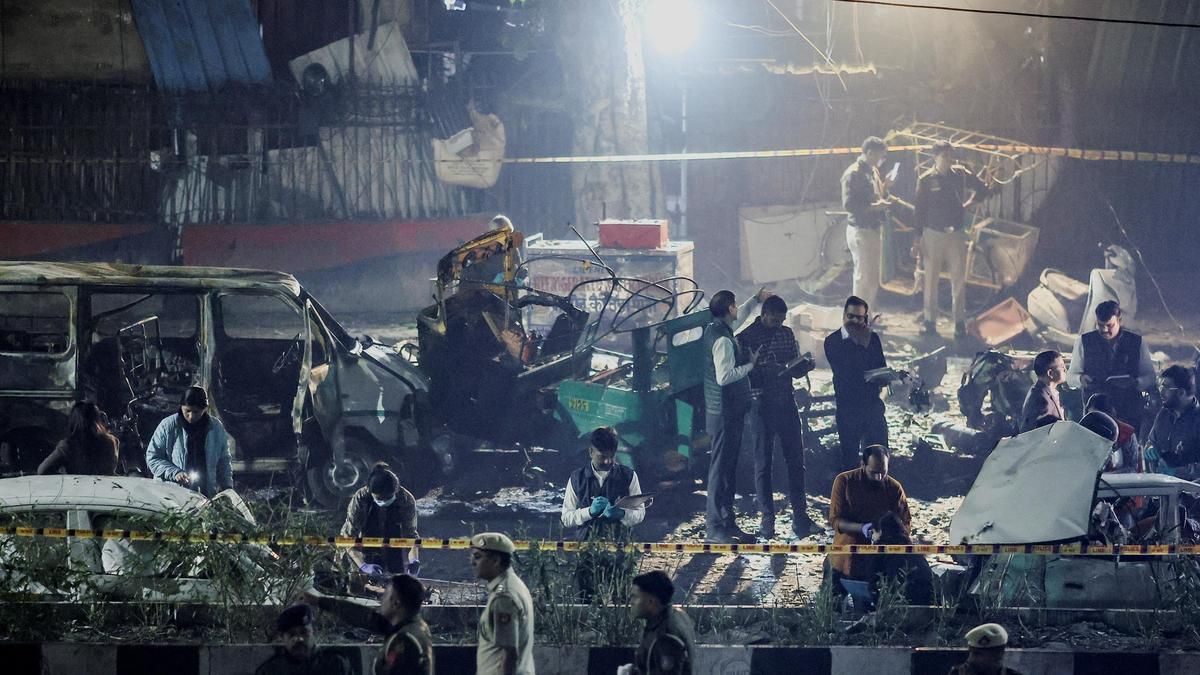Forensic Procedures After Blast Incidents: Key Functions and Scientific Methods

IN NEWS
Forensic Procedures After Blast Incidents: Key Functions and Scientific Methods
ANALYSIS
1. Context
- On November 10, a major explosion occurred near the Red Fort complex in New Delhi, involving an i20 car.
- The blast destroyed several vehicles and caused the death of 13 people.
- Forensic teams from the Delhi Forensic Laboratory (Explosives Department) reached the site within 30 minutes, along with police personnel.
2. Primary Role of Forensic Experts After a Blast
- Scientific Examination of the Scene
- Observe and analyse the scene to determine the cause of explosion.
- Establish whether the blast was intentional, accidental, or due to mechanical failure.
- Collection of Physical Evidence
- Gather samples such as residue, burnt materials, debris fragments, metallic parts, wiring, battery remains, soil samples, etc.
- Collect biological samples if needed to identify victims or perpetrators.
- Preservation and Documentation
- Photograph and map the blast site.
- Secure evidence in sealed, tamper-proof packets to maintain chain of custody.
- Laboratory Analysis
- Conduct rapid tests on collected materials to detect:
- Explosive substances
- Accelerants
- Chemical compositions
- Triggering mechanisms
- Use chemical, microscopic, chromatographic, and spectrometric methods.
- Conduct rapid tests on collected materials to detect:
3. Determining Nature of Explosion
Forensic experts consider:
- Blast Pattern Analysis
- Shape and spread of damage help determine epicentre and intensity.
- Distinguishes between high-order and low-order explosives.
- Residue Identification
- Presence of nitrates, nitrites, hydrocarbons, or specific chemical signatures indicates deliberate explosive devices.
- Mechanical Indicators
- Fuel tank explosions or electrical system failures show different burn patterns compared to bombs.
- Trigger Mechanism Detection
- Examination of wires, timing devices, or switches helps establish whether detonators were used.
4. Internal Structure of Forensic Science Labs
- Several divisions collaborate when investigating blast incidents:
- Explosives Division
- Chemistry Division
- Physics/Ballistics Division
- Biology/DNA Division
- Cyber Forensics (if digital triggers are suspected)
- Coordinated analysis ensures accurate conclusions about cause, materials used, and potential perpetrators.
5. Significance of Prompt Forensic Response
- Helps investigators identify:
- Nature and type of explosive used.
- Whether the act was intentional (terror-related) or accidental.
- Possible suspects through scientific linking of materials.
- Quick results aid law enforcement agencies in public safety measures and further prevention.
STATIC PART (Relevant to Input)
Forensic Science Laboratory (FSL): Key Functions
- Provides scientific support to criminal investigations.
- Specialises in ballistics, explosives, toxicology, serology, DNA profiling, and chemical analysis.
- Ensures evidence is processed in accordance with scientific and legal standards.
Explosives Division of FSL
- Examines residues and debris from suspected explosion sites.
- Identifies explosive materials such as RDX, PETN, TNT, ANFO, gelatine sticks, etc.
- Works closely with law enforcement for rapid preliminary assessment.
Updated – 12 November 2025 ; 10:39 AM | News Source: The Hindu